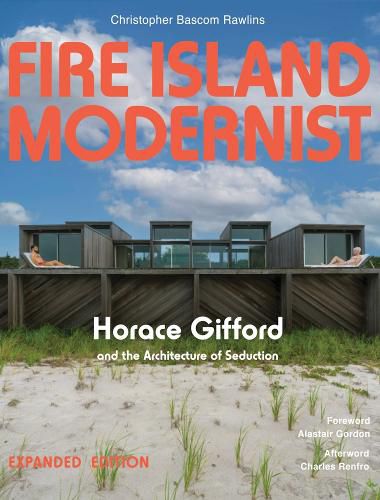Readings Newsletter
Become a Readings Member to make your shopping experience even easier.
Sign in or sign up for free!
You’re not far away from qualifying for FREE standard shipping within Australia
You’ve qualified for FREE standard shipping within Australia
The cart is loading…






Featuring new houses, many additional photographs and a new afterword, Fire Island Modernist offers a fascinating look at the history and culture of this "gay paradise" through the life and work of Horace Gifford
As the 1960s became the "Sixties," architect Horace Gifford executed a remarkable series of beach houses that transformed the terrain and culture of New York's Fire Island. Growing up on the beaches of Florida, Gifford forged a deep connection with coastal landscapes. Pairing this sensitivity with jazzy improvisations on modernist themes, he perfected a sustainable modernism in cedar and glass that was as attuned to natural landscapes as to our animal natures. Gifford's serene 1960s pavilions provided refuge from a hostile world, while his exuberant post-Stonewall, pre-AIDS masterpieces orchestrated bacchanals of liberation. Marilyn Monroe, Elizabeth Taylor and Montgomery Clift once spurned Hollywood limos for the rustic charm of Fire Island's boardwalks. Truman Capote wrote Breakfast at Tiffany's here. Diane von Fuerstenberg showed off her latest wrap dresses to an audience that included Halston, Giorgio Sant' Angelo, Calvin Klein and Geoffrey Beene. Today, such a roster evokes the aloof, gated compounds of the Hamptons or Malibu. But these celebrities lived in modestly scaled homes alongside middle-class vacationers, all with equal access to Fire Island's natural beauty. Blending cultural and architectural history, Fire Island Modernist ponders a fascinating era through an overlooked architect whose life, work and colorful milieu trace the operatic arc of a lost generation, and still resonate with artistic and historical import. First published in 2013 and long out of print, this iconic book returns in an expanded edition, including five new featured houses, drawings of previously unseen homes, new photography, updated scholarship and a new afterword by Charles Renfro.
This book was published in conjunction with Gordon De Vries Studio
$9.00 standard shipping within Australia
FREE standard shipping within Australia for orders over $100.00
Express & International shipping calculated at checkout
Featuring new houses, many additional photographs and a new afterword, Fire Island Modernist offers a fascinating look at the history and culture of this "gay paradise" through the life and work of Horace Gifford
As the 1960s became the "Sixties," architect Horace Gifford executed a remarkable series of beach houses that transformed the terrain and culture of New York's Fire Island. Growing up on the beaches of Florida, Gifford forged a deep connection with coastal landscapes. Pairing this sensitivity with jazzy improvisations on modernist themes, he perfected a sustainable modernism in cedar and glass that was as attuned to natural landscapes as to our animal natures. Gifford's serene 1960s pavilions provided refuge from a hostile world, while his exuberant post-Stonewall, pre-AIDS masterpieces orchestrated bacchanals of liberation. Marilyn Monroe, Elizabeth Taylor and Montgomery Clift once spurned Hollywood limos for the rustic charm of Fire Island's boardwalks. Truman Capote wrote Breakfast at Tiffany's here. Diane von Fuerstenberg showed off her latest wrap dresses to an audience that included Halston, Giorgio Sant' Angelo, Calvin Klein and Geoffrey Beene. Today, such a roster evokes the aloof, gated compounds of the Hamptons or Malibu. But these celebrities lived in modestly scaled homes alongside middle-class vacationers, all with equal access to Fire Island's natural beauty. Blending cultural and architectural history, Fire Island Modernist ponders a fascinating era through an overlooked architect whose life, work and colorful milieu trace the operatic arc of a lost generation, and still resonate with artistic and historical import. First published in 2013 and long out of print, this iconic book returns in an expanded edition, including five new featured houses, drawings of previously unseen homes, new photography, updated scholarship and a new afterword by Charles Renfro.
This book was published in conjunction with Gordon De Vries Studio